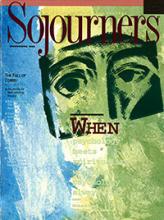For many, the prison riots 20 years ago at New York's Attica State Correctional Facility fit into the tapestry of the times: the church bombing in Birmingham, the massacre of Vietnamese civilians at My Lai, the gunning down of student protesters at Kent State (and the less often remembered Jackson State). All of these incidents pointed to an unpleasant reality: how the institutions of this country were willing to treat those deemed problematic.
And whereas these atrocities forced most Americans to ask questions about themselves, the riots at Attica prison gave most white Americans the opportunity to ask questions about others (read "black people"). Though Attica should have raised questions about racism in the American penal justice system (as well as society at large), it mostly raised to a conscious level people's deepest fears, creating a vacuum for the tough-on-crime, law-and-order rhetoric of President Richard Nixon -- rhetoric that still echoes through the halls of this country's most powerful institutions.
For me, Attica was another piece of the quilt; for African Americans and other people of color, Attica was a tutorial on their future in America. It was a formative and life-changing experience by which their lenses became all-too-clear, the future no longer in doubt.
This September 13, on the occasion of the 20th anniversary of the Attica tragedy, I sought to examine the lessons our nation learned from it -- not an easy task, as in my quick glance I discovered no mention of the anniversary in The Washington Post, The New York Times, or The Minneapolis Star Tribune. The story's absence became a lesson in itself.
Read the Full Article

